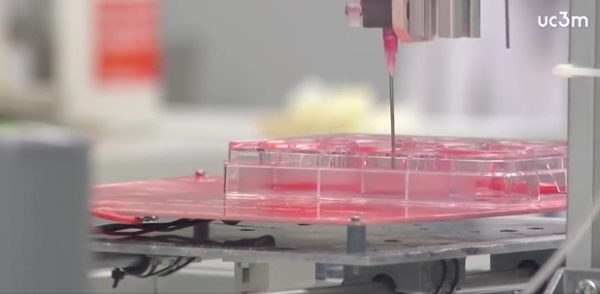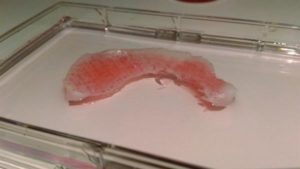Researchers from Complutense University of Madrid, in collaboration with the Spanish National Research Council (CSIC – Consejo Superior de Investigaciones Científicas), will soon be able to create 3D printed bones and cartilage.

Indeed, researches in Spain improved in the field of bio-printing, 3D printing of human skin tissues. Scientists working in this field now try to make possible 3D printing of bone tissues, which will mainly serve for the treatment of pathologies that affect human bones. In addition, it will reduce the need to use animals as laboratory test.
 In order to carry out bio-printing of bones and cartilage tissue, researchers at Complutense University in Madrid use a 3D printed polycaprolactone (PCL) grid. After being extracted from the existing tissue, the patient’s cells can be implanted in this grid with a needle that is attached to the head of the printer. These cells then start reproducing in the PCL grid, forming the required tissue.
In order to carry out bio-printing of bones and cartilage tissue, researchers at Complutense University in Madrid use a 3D printed polycaprolactone (PCL) grid. After being extracted from the existing tissue, the patient’s cells can be implanted in this grid with a needle that is attached to the head of the printer. These cells then start reproducing in the PCL grid, forming the required tissue.
The tissue obtained can be implemented in two ways in the patient: on the one hand, by placing the grid with the patient’s cells in the fracture of the bone or cartilage, so that they regenerate inside the body. On the other hand, based on the creation of an ecosystem in the lab, cells reconstruct the tissue, which is then implanted in the patient.
 The initial cells from the body of the patient who will undergo the transplantation allow the printed tissues to be less likely to be rejected by the patient.
The initial cells from the body of the patient who will undergo the transplantation allow the printed tissues to be less likely to be rejected by the patient.
The research of Complutense University of Madrid and the CSIC is still in progress. The experimental procedure requires various checks and tests before it can be used on real patients. Given the bio-printing research advances, one can expect to see the entire medical sector impacted by innovations resulting from this research.
//pagead2.googlesyndication.com/pagead/js/adsbygoogle.js
(adsbygoogle = window.adsbygoogle || []).push({});





